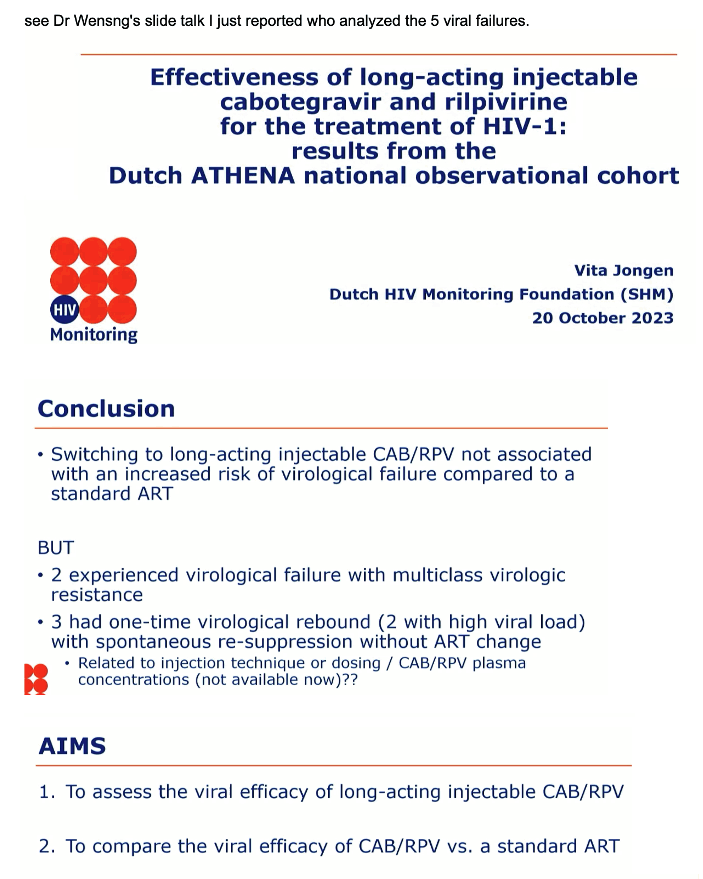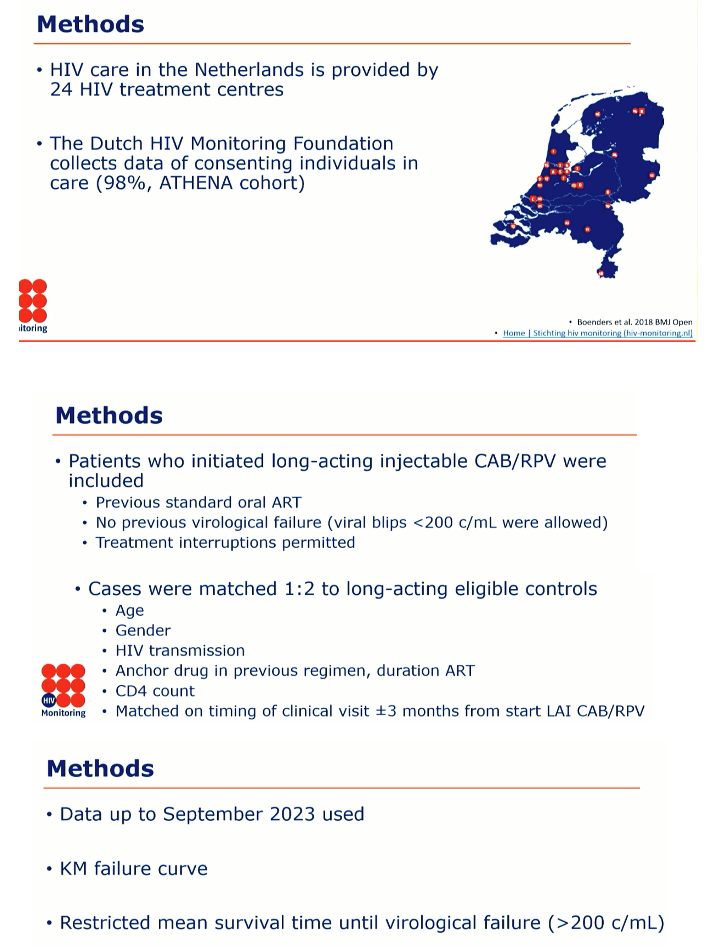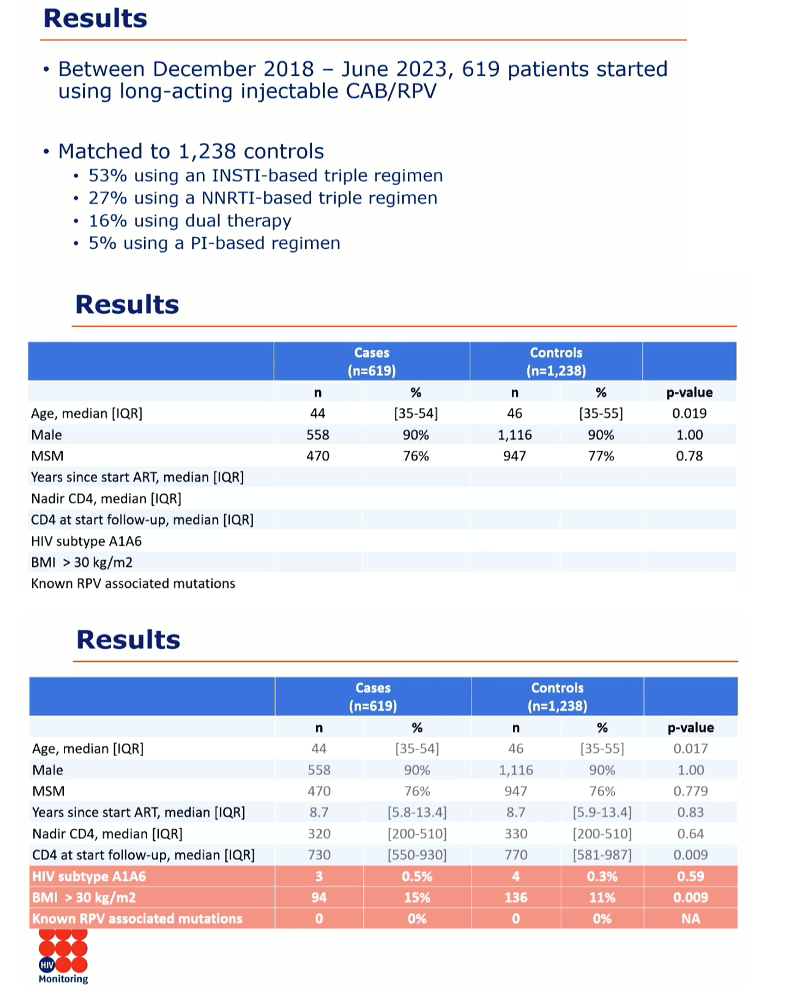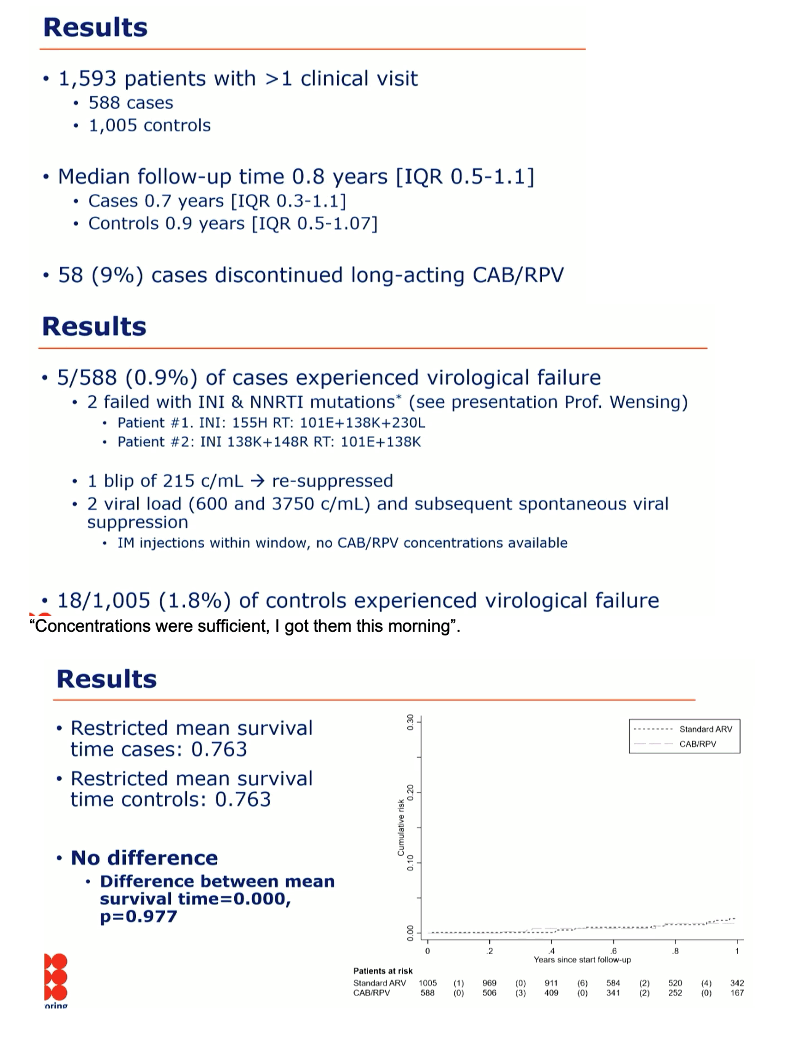 |
 |
 |
| |
Failure Rate Similar With Long-Acting CAB + RPV and Standard Oral Combos
|
| |
| |
EACS 2023, October 18-21, 2023, Warsaw
Mark Mascolini
Virologic failure rate proved equivalent in people switching to long-acting injected cabotegravir (CAB) plus rilpivirine (RPV) and in those taking a standard oral regimen in a case-control study involving the Netherlands ATHENA cohort [1]. Five of 588 people (0.9%) trading oral antiretrovirals for CAB + RPV had a virologic failure with the two injected drugs.
The investigators used the nationwide ATHENA cohort to collect a study group of people who started long-acting injectable CAB + RPV after a successful standard regimen. No one had a prior virologic failure (viral load above 200 copies) on their chart. The research team matched these CAB + RPV cases 1-to-2 to people eligible to start CAB + RPV who did not start the injected regimen. They matched cases to controls by age, gender, HIV acquisition route, anchor drug in the previous regimen, duration of antiretroviral therapy, CD4 count, and timing of clinical visits (+/- 3 months from the start of CAB + RPV). This analysis scrutinized data collected up to September 2023.
From December 2018 to June 2023, ATHENA had 619 people starting CAB + RPV. These cases got matched to 1238 controls, of whom 53% used an integrase inhibitor triple regimen, 27% a nonnucleoside triple regimen, 16% two-drug therapy, and 5% a protease inhibitor combination. Cases matched controls well for median age (44 and 46), proportion of males (90% and 90%), years since antiretroviral therapy began (8.7 and 8.7), and nadir CD4 count (320 and 330). At the start of follow-up cases had a significantly lower (but not clinically meaningful) CD4 count (730 and 770).
Median follow-up stood at 0.8 year among 588 cases and 1005 controls who made more than 1 clinic visit. Fifty-eight people stopped taking long-acting CAB + RPV. The investigators counted 5 virologic failures in the CAB + RPV cases, including 2 in whom integrase inhibitor and nonnucleoside mutations emerged. Another 2 had breakthrough viral loads reaching 600 and 3750 copies, but both resuppressed HIV without changing regimens. The fifth person classified as a virologic failure had a single viral blip to 215 copies then regained an undetectable HIV load. The 18 controls with virologic failure yielded a virologic failure rate of 1.8% versus 0.9% in people getting CAB + RPV. Restricted mean survival time [2] in cases exactly matched that in controls (0.763).
ATHENA collaborators concluded that "switching to long-acting injectable CAB/RPR [is] not associated with an increased risk of virological failure compared to a standard ART."
References
1. Jongen V, Wit F, van Eeeden A, et al. Effectiveness of injectable long-acting cabotegravir and rilpivirine for the treatment of HIV-1: results from the Dutch ATHENA national observational cohort. EACS 2023, October 18-21, 2023, Warsaw.
2. "Restricted mean survival time (RMST) is an alternative measure that may overcome some of the limitations of proportional hazards modeling. RMST is the average time free from an event up until a milestone time point, a numeric expression of the area under the Kaplan-Meier survival curve." Perego C, Sbolli M, Specchia C, et al. Utility of restricted mean survival time analysis for heart failure clinical trial evaluation and interpretation. JACC: Heart Failure. 2020;8:973-983. https://www.sciencedirect.com/science/article/pii/S2213177920304558





|
| |
|
 |
 |
|
|